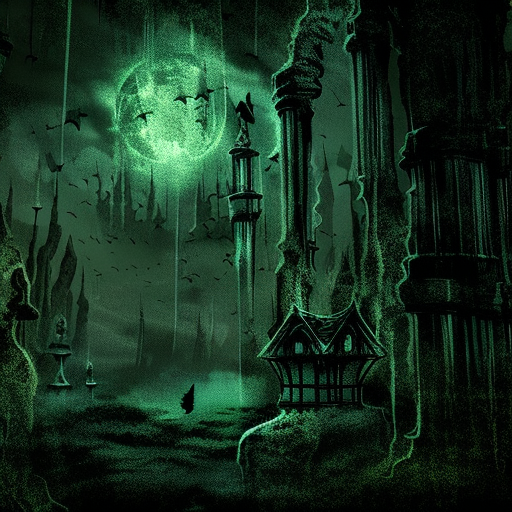One-line summary:
In “Nevermore,” a gripping psychological thriller by Edgar Allan Poe, the protagonist struggles with his own sanity as he becomes obsessed with the idea that a talking raven is a harbinger of his impending doom.
The Haunting of the Mind
“Nevermore” takes readers on a dark and twisted journey into the depths of the human psyche. The story revolves around the unnamed narrator, a troubled man who is haunted by the death of his beloved Lenore. As he descends into madness, he becomes fixated on a mysterious talking raven that repeatedly utters the word “Nevermore.”
The narrator’s obsession with the raven grows to the point where he begins to question his own sanity. He interprets the raven’s presence as a sign of impending doom and believes that it holds the answers to his deepest fears and desires. The bird’s relentless repetition of “Nevermore” serves as a constant reminder of his own mortality and the inevitability of death.
As the story unfolds, the narrator’s mental state deteriorates further, blurring the lines between reality and his own twisted imagination. He becomes increasingly paranoid and fearful, convinced that the raven is a supernatural being sent to torment him. The raven’s presence becomes a symbol of the narrator’s inner demons and his inability to escape his own tortured mind.
A Descent into Madness
“Nevermore” delves into the themes of guilt, grief, and the fragility of the human mind. The narrator’s obsession with the raven can be seen as a manifestation of his guilt over the death of Lenore. He is tormented by the memories of his lost love and is unable to move on from the past. The raven becomes a physical representation of his guilt, a constant reminder of his perceived role in Lenore’s demise.
As the story progresses, the narrator’s descent into madness becomes more pronounced. His thoughts become increasingly erratic and his actions more desperate. He becomes consumed by his own paranoia and delusions, unable to distinguish between reality and his own distorted perception of the world.
The Power of Symbolism
“Nevermore” is filled with rich symbolism that adds depth and complexity to the story. The raven itself is a powerful symbol, representing death, darkness, and the unknown. Its presence serves as a constant reminder of the narrator’s mortality and the inevitability of his own demise.
The repeated use of the word “Nevermore” also holds significant meaning. It serves as a reminder of the narrator’s inability to escape his own guilt and grief. The word echoes throughout the story, haunting the narrator and reinforcing his feelings of despair and hopelessness.
Ultimately, “Nevermore” is a chilling exploration of the human psyche and the destructive power of obsession. It delves into the darkest corners of the mind, exposing the fragility of sanity and the terrifying consequences of unchecked obsession.
- The fragility of the human mind and the destructive power of obsession.
- The symbolism of the raven as a representation of death and the unknown.
- The haunting repetition of the word “Nevermore” as a reminder of the narrator’s guilt and despair.
“Quoth the Raven, ‘Nevermore.'” – Edgar Allan Poe
In “Nevermore,” Edgar Allan Poe masterfully weaves a tale of psychological torment and obsession. Through vivid imagery and haunting symbolism, the story explores the depths of the human mind and the devastating consequences of unchecked obsession. As readers are drawn into the narrator’s descent into madness, they are forced to confront their own fears and contemplate the fragility of their own sanity. “Nevermore” serves as a chilling reminder of the power of the mind and the darkness that can lurk within us all.












